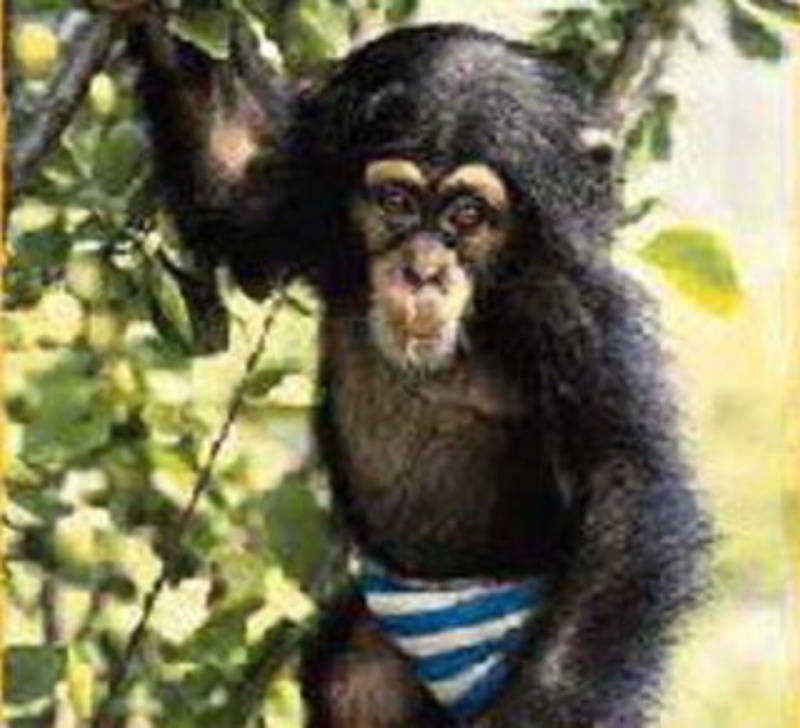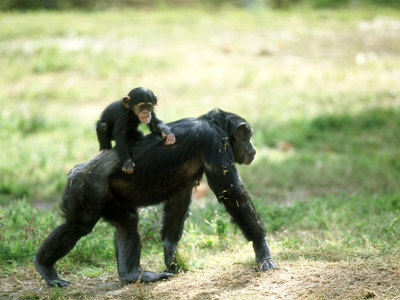

Taking the time to try might cause the chimp to lose its kill to competitors.
#Chimpanzee baby eating crack#
Unauthorized use is prohibited.Īnd while a chimp might be able to crack a young monkey's skull with a bite, the brains of adult monkeys aren't as easy to access. "The whole carcass is valuable, but the brain is especially valuable."īrains are high in fat and a source of long-chain fatty acids, which aid in neurological development. “We tend to just say meat is meat, but we know that the nutrient composition varies," says Gilby, whose study appeared recently in the International Journal of Primatology. Gilby thinks it has to do with nutrition. This left him with a little-studied question that's relevant to how humans evolved: Why would the apes prefer to eat a particular body part first? Brain Food Chimps consuming adult prey show less of a pattern, he found. Reviewing the videos later, he noticed that chimps eat subadult prey-infants, juveniles, and adolescents-heads first. Ian Gilby, an anthropologist at Arizona State University and leader of a new study on the subject, originally filmed members of the habituated Kasekela chimp community in Gombe to learn more about how they share meat. Chaos ensues as monkeys fall from trees to the screams of chimps as they make their kill-all of it caught on video. They come upon red colobus monkeys.Ĭhimps survey their prey. In some instances, these murders seem to be related to male competition or to female-to-male ratios within the group, but the reasoning is not always clear.A group of chimpanzees travels through the woodlands of Gombe National Park, Tanzania, where Jane Goodall first began studying their kind back in 1960.

Many cases have been recorded across several chimpanzee groups, perpetuated not only by males, but also females, sometimes working alone and at other times cooperating on the grisly task. Such accusations were levied, for example, at the male chimp who killed a three-month-old of its same group in the Los Angeles Zoo in 2012, and also to the famous mother-daughter pair of Passion and Pom, observed in the wild by Jane Goodall as they worked together to kill at least three infants within their own troop.īut scientists have been studying chimps for years, and it seems infanticide is not at all uncommon. To us humans, infanticide may seem like a gruesome and irrational act, and it can be easy to assume that there must be something wrong with baby-killing chimps.

Other times, it may simply be the result of aggression. Young animals may occasionally offer a convenient source of food, and males of plenty of species – from apes to lions to dolphins – are known to kill the children of other males to remove competition and to bring the mothers back into oestrus so they can breed again. It’s not news that animals sometimes kill and eat babies of their own species, and even their own children. If it’s true that maternity leave exists to protect baby chimps from cannibals, it raises another macabre question: why is infanticide so common? And indeed, for her next birth, she left for about a month. It may be that this mother was young and inexperienced, unaware of the dangers of having her baby in front of the 20 other members of her group. “ suggest that it functions as a possible counterstrategy of mother chimpanzees against the risk of infanticide soon after delivery,” the researchers state. In their new study, in addition to recording this startling case of baby-snatching, Hitonaru Nishie and Michio Nakamura of Kyoto University also looked over three decades of attendance records of this Mahale Mountains chimp group, and found that while it's not uncommon for female chimps to occasionally leave the group, the longest absences were generally taken for this “maternity leave.”įor a while, primatologists have wondered why chimps would leave their companions behind to give birth alone in the woods, and now it seems they might have a clearer answer.


 0 kommentar(er)
0 kommentar(er)
